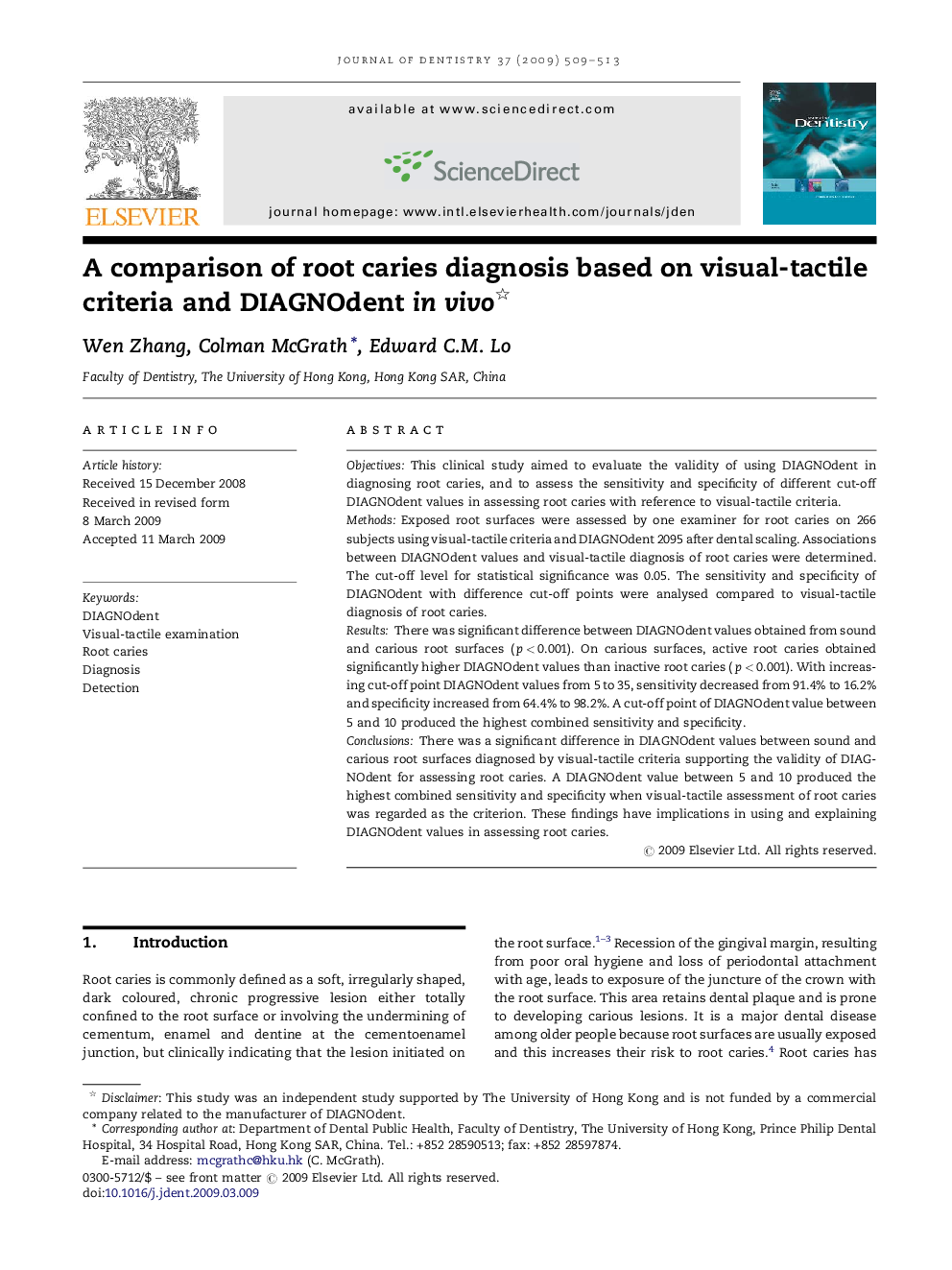| Article ID | Journal | Published Year | Pages | File Type |
|---|---|---|---|---|
| 3145328 | Journal of Dentistry | 2009 | 5 Pages |
ObjectivesThis clinical study aimed to evaluate the validity of using DIAGNOdent in diagnosing root caries, and to assess the sensitivity and specificity of different cut-off DIAGNOdent values in assessing root caries with reference to visual-tactile criteria.MethodsExposed root surfaces were assessed by one examiner for root caries on 266 subjects using visual-tactile criteria and DIAGNOdent 2095 after dental scaling. Associations between DIAGNOdent values and visual-tactile diagnosis of root caries were determined. The cut-off level for statistical significance was 0.05. The sensitivity and specificity of DIAGNOdent with difference cut-off points were analysed compared to visual-tactile diagnosis of root caries.ResultsThere was significant difference between DIAGNOdent values obtained from sound and carious root surfaces (p < 0.001). On carious surfaces, active root caries obtained significantly higher DIAGNOdent values than inactive root caries (p < 0.001). With increasing cut-off point DIAGNOdent values from 5 to 35, sensitivity decreased from 91.4% to 16.2% and specificity increased from 64.4% to 98.2%. A cut-off point of DIAGNOdent value between 5 and 10 produced the highest combined sensitivity and specificity.ConclusionsThere was a significant difference in DIAGNOdent values between sound and carious root surfaces diagnosed by visual-tactile criteria supporting the validity of DIAGNOdent for assessing root caries. A DIAGNOdent value between 5 and 10 produced the highest combined sensitivity and specificity when visual-tactile assessment of root caries was regarded as the criterion. These findings have implications in using and explaining DIAGNOdent values in assessing root caries.
